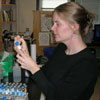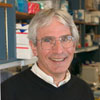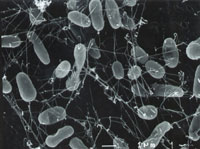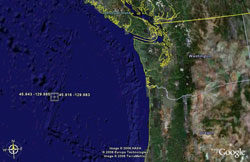 |

For further information, contact the MBL Communications Office at (508) 289-7423 or e-mail us at comm@mbl.edu
Contact: Gina Hebert, MBL, 508-289-7725; ghebert@mbl.edu
Hydrothermal Vents: Hot Spots of Microbial Diversity
New analysis aids in discovery of thousands of deep-sea microbes
MBL, WOODS HOLE, MA—Thousands of new kinds of marine microbes have been discovered at two deep-sea hydrothermal vents off the Oregon coast by scientists at the MBL (Marine Biological Laboratory) and University of Washington’s Joint Institute for the Study of Atmosphere and Ocean. Their findings, published in the October 5 issue of the journal Science, are the result of the most comprehensive, comparative study to date of deep-sea microbial communities that are responsible for cycling carbon, nitrogen, and sulfur to help keep Earth habitable... MORE>>>
Resouces
Citation:
Huber, Julie A. et al. Microbial Population Structures in the Deep Marine Biosphere. Science, 5 October 2007, Vol. 318, Issue 5847, 97-100.
For full text of this paper, media can contact the Science press office, scipak@aaas.org
Staff Photos:
 |
 |
 |
 |
 |
Julie Huber
Lab |
|
Mitch Sogin
Lab |
|
David Mark Welch
Lab |
|
|
|
|
|
Other Images:
 |
 |
 |
 |
 |
| Available in high resolution |
|
Available in medium resolution |
|
Available in medium resolution |
| Image of diffuse flow hydrothermal vent Marker 52 taken in 2006 by the Remotely Operated Vehicle ROPOS during the NeMO 2006 expedition to Axial Seamount. Image courtesy NOAA Vents Program, NeMO Seafloor Observatory. |
|
Thermophilic bacteria isolated from Bag City Vent, one of the vents that was part of the MBL/JISAO microbial diversity study. Images by Julie Huber. |
 |
 |
Full size map
Map of Sampling Locations (courtesy of Google Maps)
|
|
|
|
For more information on Axial Seamount, visit: http://www.pmel.noaa.gov/vents/nemo/
Other resources:
|